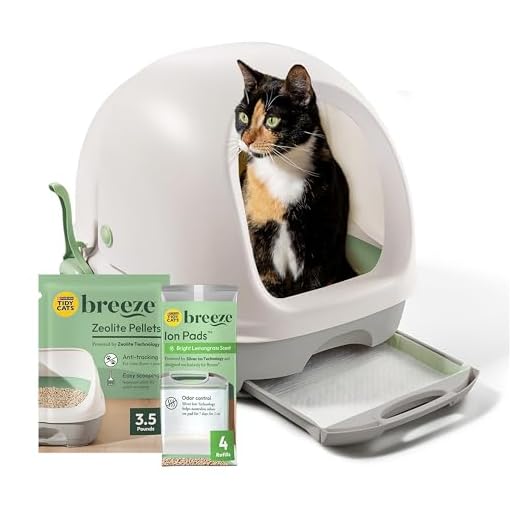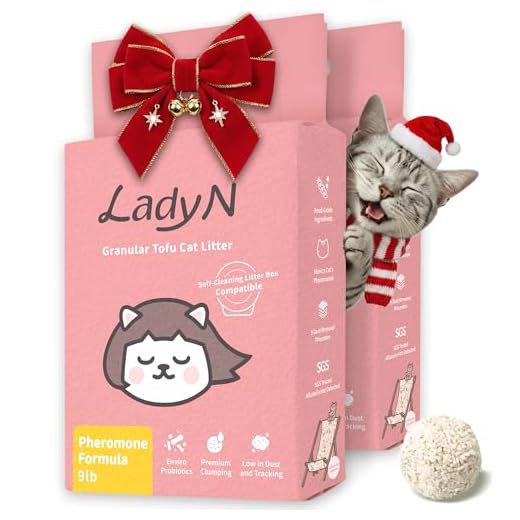



To keep things tidy, it’s essential to ensure my space is clean and comfortable. A dirty or poorly maintained area can lead me to choose alternate locations for my business. Regular cleaning and a fresh supply of substrate are crucial for my happiness.
Consider the type of material being used. Some of us prefer finer textures, while others might be sensitive to certain scents. Experimenting with different options can help find what suits me best. Also, the size and shape of the area matter; I like having enough room to feel secure while I do my thing.
Stressful situations also impact my habits. Changes in environment, new pets, or loud noises might make me seek quieter spots. Observing my behavior during these times can provide insight into why I might stray from my designated area.
Lastly, health issues can play a significant role. Regular check-ups with the vet ensure everything is functioning as it should. If you notice a sudden change in my habits, it’s worth investigating further. Keeping an eye on my behavior helps maintain a happy and clean home for both of us.
Understanding the Reasons Behind Litter Box Aversion
Ensure the waste area is clean. A dirty environment can lead to avoidance, as cleanliness is crucial for comfort.
Consider the type of substrate used. Some felines may prefer finer textures or specific scents. Experiment with various kinds to find the right fit.
Location matters. Place the receptacle in a quiet, low-traffic area. A busy space can create stress, discouraging use.
Evaluate the size and design. Some may require a larger space or a different style for ease of access. Accessibility can greatly influence preference.
Monitor for health issues. Changes in habits might signal underlying problems. Regular veterinary check-ups can help catch any concerns early.
Limit the number of waste areas. Too many options can confuse. Ideally, one should equal the number of pets plus one.
Review any recent changes in the environment. New pets, moving furniture, or loud noises can disrupt routine and lead to reluctance. Stability is key for comfort.
Identifying Health Issues That May Cause Litter Box Problems
Visit the vet if you notice changes in bathroom habits. Potential health concerns could include:
- Urinary Tract Infections (UTIs): Symptoms often include frequent attempts to relieve oneself. Look for signs of discomfort.
- Kidney Disease: Increased thirst and urination may indicate this condition. Regular veterinary check-ups are crucial.
- Gastrointestinal Issues: Diarrhea or constipation can lead to avoidance of preferred areas for elimination.
- Diabetes: Increased thirst and urination are common signs. Monitoring weight and appetite is recommended.
- Parasites: Worms or other parasites can cause digestive upset, leading to inappropriate elimination.
Pay attention to behavioral changes, as they can signal discomfort or distress. If you notice anything unusual, consult a veterinarian for a thorough examination.
For those expecting, learning how long does a pregnant cat take to give birth can also be helpful.
Diet can impact health, too. If feeding issues arise, check out advice on how can I get my cat to eat wet food.
Practical Solutions to Encourage Litter Box Use
Place multiple containers around your territory. I prefer having options; it makes me feel secure and reduces stress. Make sure they are in quiet, low-traffic areas where I can do my business without interruptions.
Choose the right substrate. Experiment with different types to find the one that feels good under my paws. Some of us like clumping clay, while others may prefer natural materials. The texture can make a big difference in my willingness to use it.
Keep everything clean. Regular scooping is a must! A dirty environment is a quick way to make me seek alternatives. Aim for daily upkeep and a deep clean of the containers weekly to eliminate odors and bacteria.
Maintain a suitable size. Ensure that the containers are spacious enough for me to turn around comfortably. A cramped space can be off-putting and discourage me from using it.
Use attractants. There are special products available that can entice me to use my designated areas. Herbal blends or commercial attractants might just do the trick to spark my interest.
Consider my health. If I’m having trouble, it could signal a health issue. Regular vet check-ups are essential to rule out any underlying problems that might affect my behavior.
Be patient and observant. Watch for patterns in my behavior. If I seem to prefer a specific spot, it may indicate a preference or discomfort with my current setup. Adjust accordingly to meet my needs.
To keep things tidy, it’s essential to ensure my space is clean and comfortable. A dirty or poorly maintained area can lead me to choose alternate locations for my business. Regular cleaning and a fresh supply of substrate are crucial for my happiness.
Consider the type of material being used. Some of us prefer finer textures, while others might be sensitive to certain scents. Experimenting with different options can help find what suits me best. Also, the size and shape of the area matter; I like having enough room to feel secure while I do my thing.
Stressful situations also impact my habits. Changes in environment, new pets, or loud noises might make me seek quieter spots. Observing my behavior during these times can provide insight into why I might stray from my designated area.
Lastly, health issues can play a significant role. Regular check-ups with the vet ensure everything is functioning as it should. If you notice a sudden change in my habits, it’s worth investigating further. Keeping an eye on my behavior helps maintain a happy and clean home for both of us.
Understanding the Reasons Behind Litter Box Aversion
Ensure the waste area is clean. A dirty environment can lead to avoidance, as cleanliness is crucial for comfort.
Consider the type of substrate used. Some felines may prefer finer textures or specific scents. Experiment with various kinds to find the right fit.
Location matters. Place the receptacle in a quiet, low-traffic area. A busy space can create stress, discouraging use.
Evaluate the size and design. Some may require a larger space or a different style for ease of access. Accessibility can greatly influence preference.
Monitor for health issues. Changes in habits might signal underlying problems. Regular veterinary check-ups can help catch any concerns early.
Limit the number of waste areas. Too many options can confuse. Ideally, one should equal the number of pets plus one.
Review any recent changes in the environment. New pets, moving furniture, or loud noises can disrupt routine and lead to reluctance. Stability is key for comfort.
Identifying Health Issues That May Cause Litter Box Problems
Visit the vet if you notice changes in bathroom habits. Potential health concerns could include:
- Urinary Tract Infections (UTIs): Symptoms often include frequent attempts to relieve oneself. Look for signs of discomfort.
- Kidney Disease: Increased thirst and urination may indicate this condition. Regular veterinary check-ups are crucial.
- Gastrointestinal Issues: Diarrhea or constipation can lead to avoidance of preferred areas for elimination.
- Diabetes: Increased thirst and urination are common signs. Monitoring weight and appetite is recommended.
- Parasites: Worms or other parasites can cause digestive upset, leading to inappropriate elimination.
Pay attention to behavioral changes, as they can signal discomfort or distress. If you notice anything unusual, consult a veterinarian for a thorough examination.
For those expecting, learning how long does a pregnant cat take to give birth can also be helpful.
Diet can impact health, too. If feeding issues arise, check out advice on how can I get my cat to eat wet food.
Practical Solutions to Encourage Litter Box Use
Place multiple containers around your territory. I prefer having options; it makes me feel secure and reduces stress. Make sure they are in quiet, low-traffic areas where I can do my business without interruptions.
Choose the right substrate. Experiment with different types to find the one that feels good under my paws. Some of us like clumping clay, while others may prefer natural materials. The texture can make a big difference in my willingness to use it.
Keep everything clean. Regular scooping is a must! A dirty environment is a quick way to make me seek alternatives. Aim for daily upkeep and a deep clean of the containers weekly to eliminate odors and bacteria.
Maintain a suitable size. Ensure that the containers are spacious enough for me to turn around comfortably. A cramped space can be off-putting and discourage me from using it.
Use attractants. There are special products available that can entice me to use my designated areas. Herbal blends or commercial attractants might just do the trick to spark my interest.
Consider my health. If I’m having trouble, it could signal a health issue. Regular vet check-ups are essential to rule out any underlying problems that might affect my behavior.
Be patient and observant. Watch for patterns in my behavior. If I seem to prefer a specific spot, it may indicate a preference or discomfort with my current setup. Adjust accordingly to meet my needs.
To keep things tidy, it’s essential to ensure my space is clean and comfortable. A dirty or poorly maintained area can lead me to choose alternate locations for my business. Regular cleaning and a fresh supply of substrate are crucial for my happiness.
Consider the type of material being used. Some of us prefer finer textures, while others might be sensitive to certain scents. Experimenting with different options can help find what suits me best. Also, the size and shape of the area matter; I like having enough room to feel secure while I do my thing.
Stressful situations also impact my habits. Changes in environment, new pets, or loud noises might make me seek quieter spots. Observing my behavior during these times can provide insight into why I might stray from my designated area.
Lastly, health issues can play a significant role. Regular check-ups with the vet ensure everything is functioning as it should. If you notice a sudden change in my habits, it’s worth investigating further. Keeping an eye on my behavior helps maintain a happy and clean home for both of us.
Understanding the Reasons Behind Litter Box Aversion
Ensure the waste area is clean. A dirty environment can lead to avoidance, as cleanliness is crucial for comfort.
Consider the type of substrate used. Some felines may prefer finer textures or specific scents. Experiment with various kinds to find the right fit.
Location matters. Place the receptacle in a quiet, low-traffic area. A busy space can create stress, discouraging use.
Evaluate the size and design. Some may require a larger space or a different style for ease of access. Accessibility can greatly influence preference.
Monitor for health issues. Changes in habits might signal underlying problems. Regular veterinary check-ups can help catch any concerns early.
Limit the number of waste areas. Too many options can confuse. Ideally, one should equal the number of pets plus one.
Review any recent changes in the environment. New pets, moving furniture, or loud noises can disrupt routine and lead to reluctance. Stability is key for comfort.
Identifying Health Issues That May Cause Litter Box Problems
Visit the vet if you notice changes in bathroom habits. Potential health concerns could include:
- Urinary Tract Infections (UTIs): Symptoms often include frequent attempts to relieve oneself. Look for signs of discomfort.
- Kidney Disease: Increased thirst and urination may indicate this condition. Regular veterinary check-ups are crucial.
- Gastrointestinal Issues: Diarrhea or constipation can lead to avoidance of preferred areas for elimination.
- Diabetes: Increased thirst and urination are common signs. Monitoring weight and appetite is recommended.
- Parasites: Worms or other parasites can cause digestive upset, leading to inappropriate elimination.
Pay attention to behavioral changes, as they can signal discomfort or distress. If you notice anything unusual, consult a veterinarian for a thorough examination.
For those expecting, learning how long does a pregnant cat take to give birth can also be helpful.
Diet can impact health, too. If feeding issues arise, check out advice on how can I get my cat to eat wet food.
Practical Solutions to Encourage Litter Box Use
Place multiple containers around your territory. I prefer having options; it makes me feel secure and reduces stress. Make sure they are in quiet, low-traffic areas where I can do my business without interruptions.
Choose the right substrate. Experiment with different types to find the one that feels good under my paws. Some of us like clumping clay, while others may prefer natural materials. The texture can make a big difference in my willingness to use it.
Keep everything clean. Regular scooping is a must! A dirty environment is a quick way to make me seek alternatives. Aim for daily upkeep and a deep clean of the containers weekly to eliminate odors and bacteria.
Maintain a suitable size. Ensure that the containers are spacious enough for me to turn around comfortably. A cramped space can be off-putting and discourage me from using it.
Use attractants. There are special products available that can entice me to use my designated areas. Herbal blends or commercial attractants might just do the trick to spark my interest.
Consider my health. If I’m having trouble, it could signal a health issue. Regular vet check-ups are essential to rule out any underlying problems that might affect my behavior.
Be patient and observant. Watch for patterns in my behavior. If I seem to prefer a specific spot, it may indicate a preference or discomfort with my current setup. Adjust accordingly to meet my needs.










